Birdsong Visualisations
This project captures and transforms bird song into tangible physical visualisations. It is an attempt to see what the transient sound of garden bird would look like if captured into solid form.
A bespoke software application, created in Processing, was written to translate a few seconds of various bird recordings into a series of concentric circles - 'sound rings'. The shapes were laser cut into wood, creating final pieces which possess the physical and tactile qualities evocative of tree ring patterns.
Like rings in the cross-section of a tree, each shape in comprised from the culmination of a series of moments in time - and can be read from the centre (the start of the song) outwards.
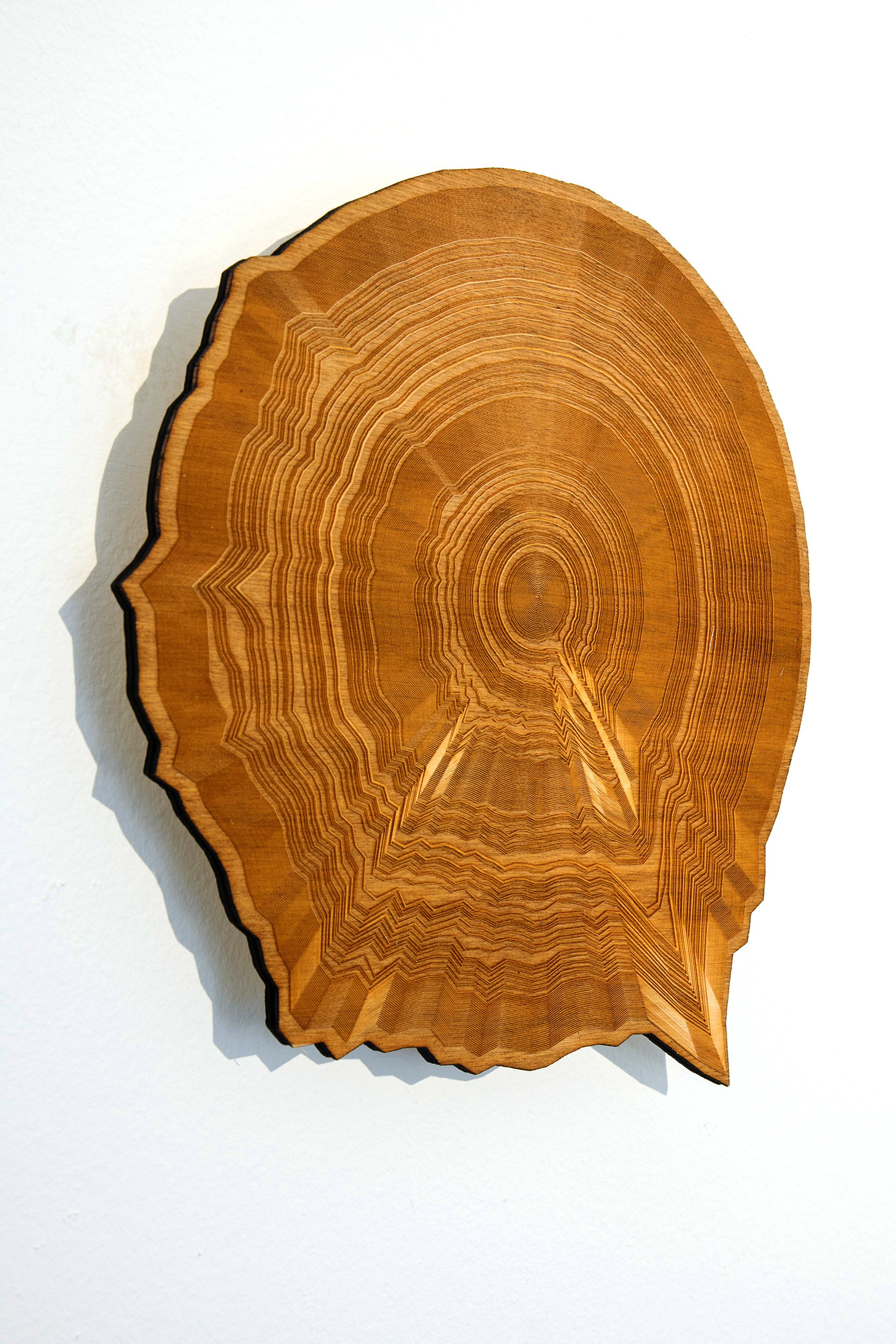
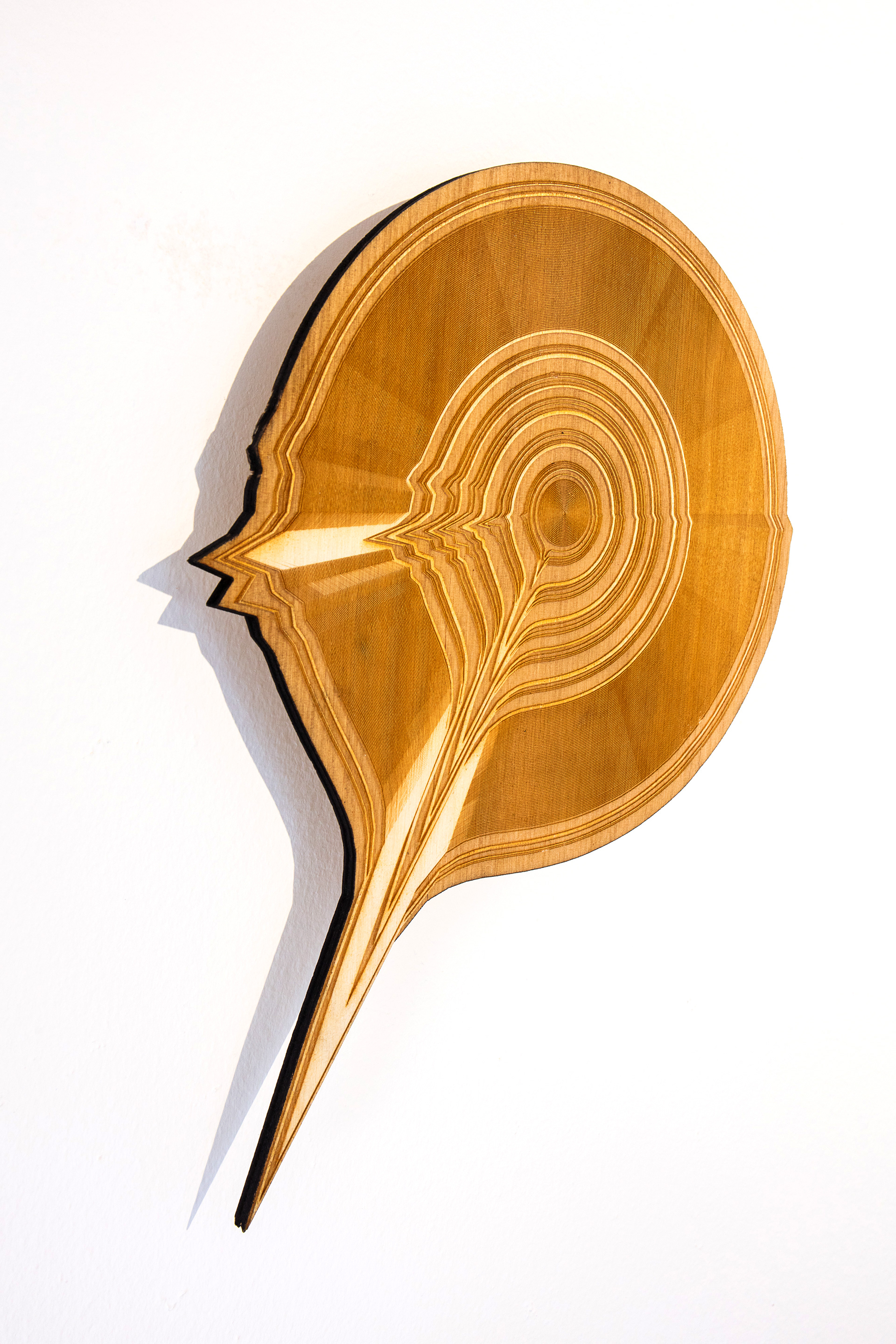
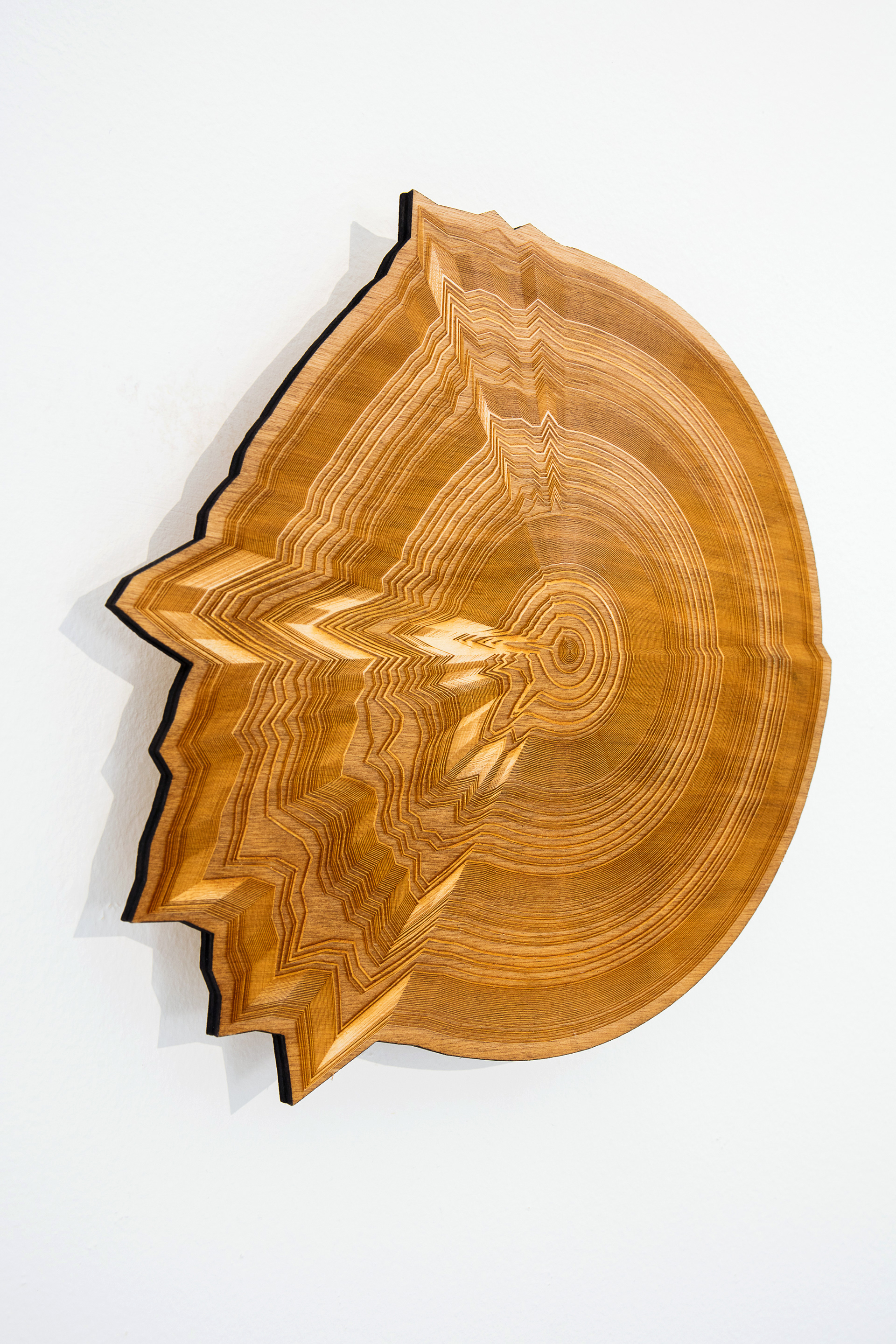
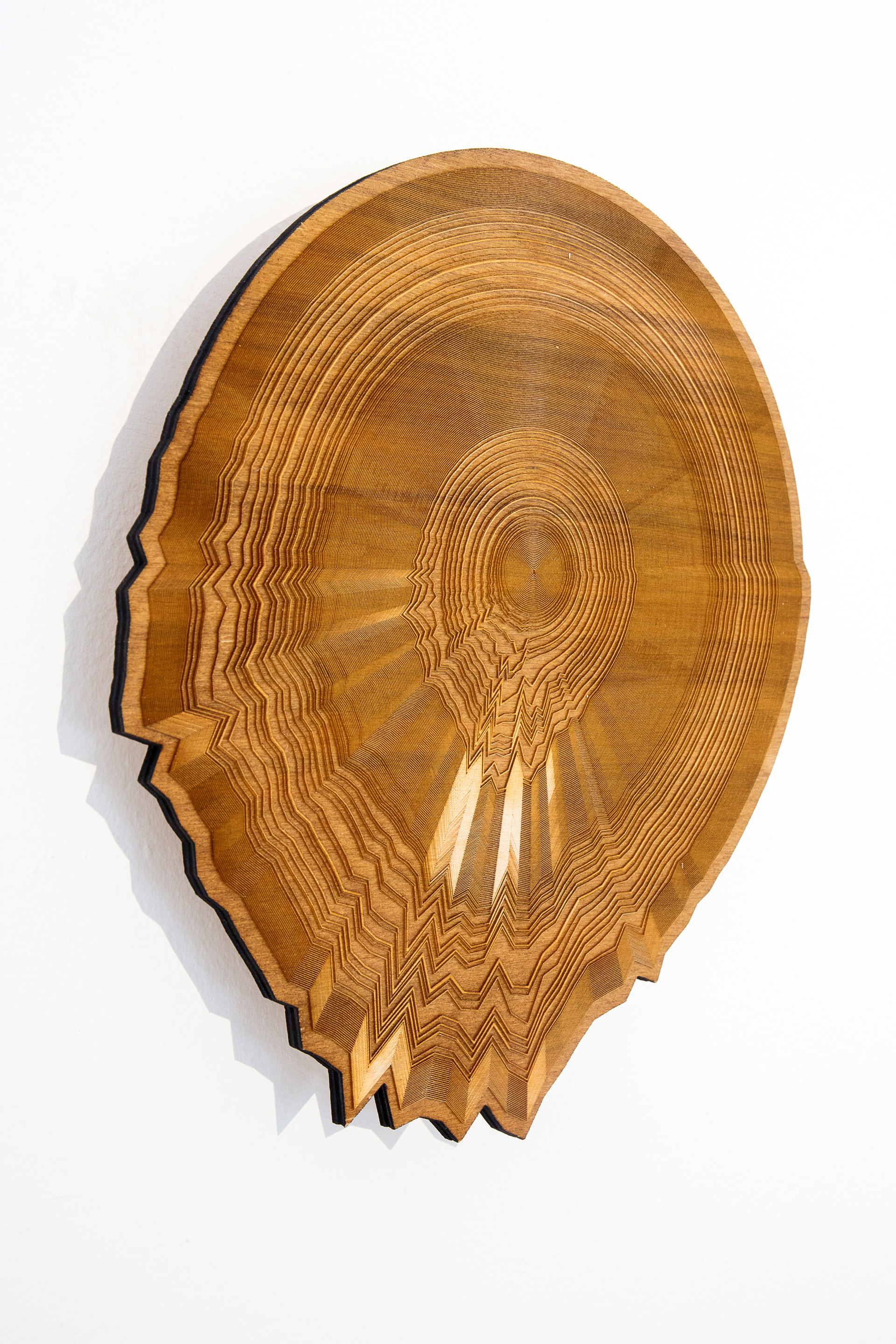
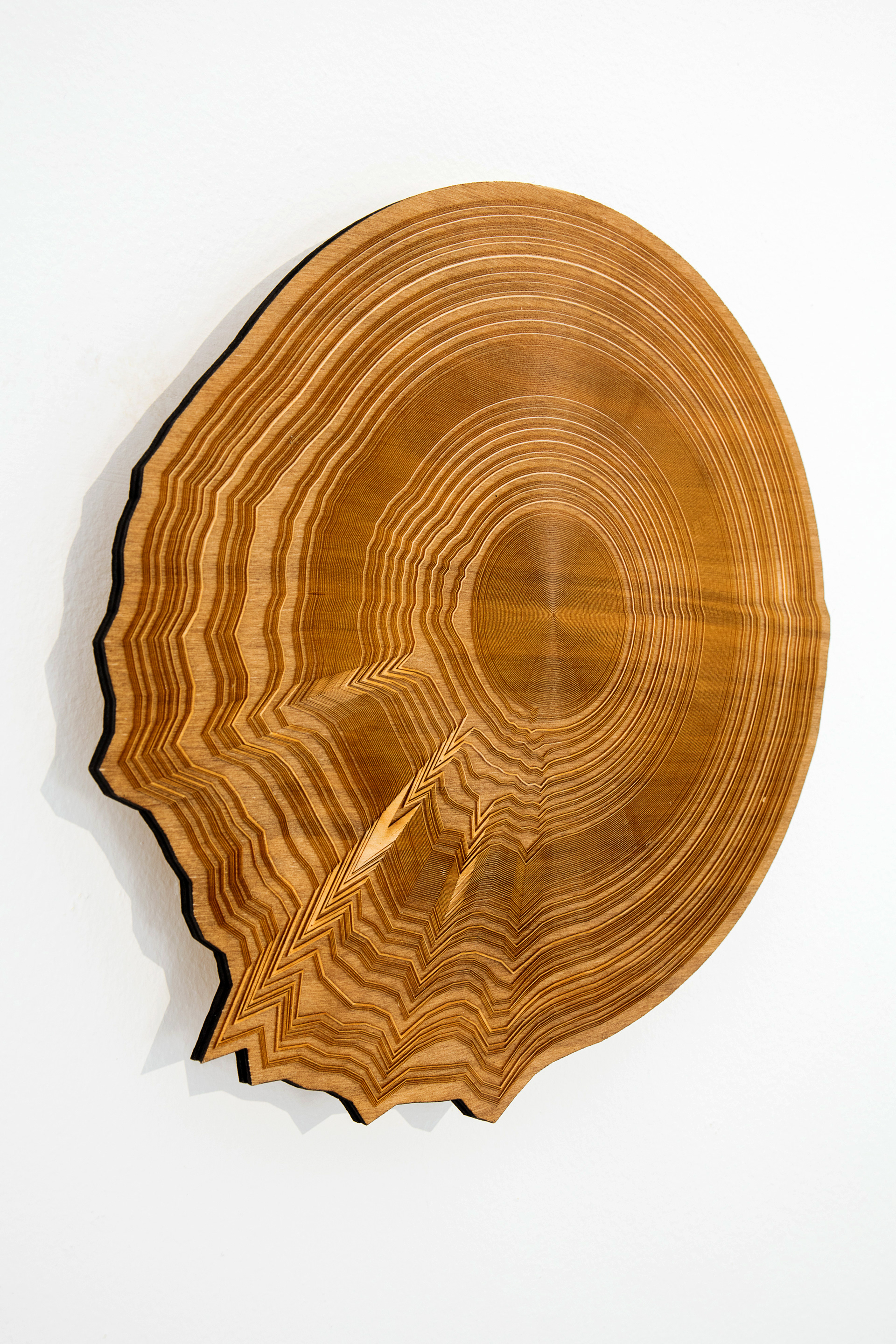
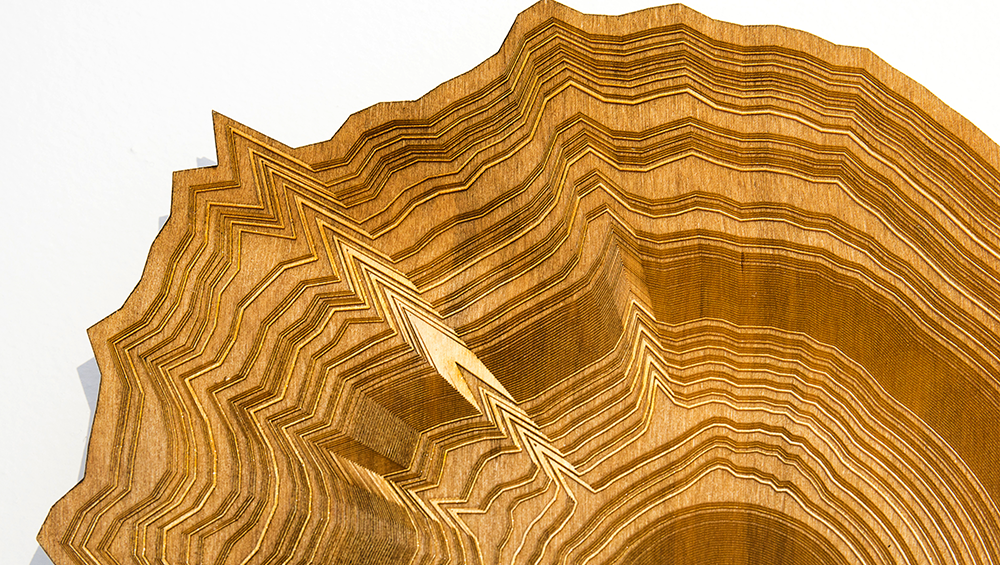
The individual rings in each shape each represent a single moment in time during the bird song. The longer the sound then the more rings there are. Distance between the rings is created by the sound levels of the song: louder passages in the song create larger gaps, whilst periods of silence are represented by tightly packed rings. The fine grain of the laser cut reveals the detail within even a small section of a song.
The overall shape of each ring is a representation of the sound ‘spectrum’ - a range of frequencies within the sound at each point in time. Spikes in the shape are created at the points in the sound spectrum which have the highest frequency. Low pitches of sounds will create spikes at different points around the ring compared to a high pitched sound. Birds with a greater range of notes generate shapes in which peaks are spread around the shape - whilst birds with a single note produce spikes at a single spot.
interactive VISUALISATION
This project is an ongoing piece of work. In this prototype the concept of the sound rings has been developed to create a dynamically generated visualisation which is informed both by the sounds and by bird population data. Each ring represents the sound of single bird: the width of each ring and the volume of the song is generated by bird population data of each species in the UK between 1966 and 2020.
